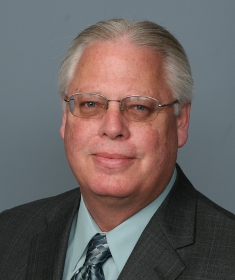What the best leaders do to stimulate growth and performance

First published by ATD in the October, 2017 issue of TD magazine. © ATD. Used with permission.
Leading in today’s competitive business climate is both exciting and challenging. One of the most significant challenges is creating an environment where direct reports feel valued, engaged, and fulfilled. This challenge is especially prevalent in organisations with a large percentage of Millennial employees, who tend to seek a culture that aligns with their own value system—one where they can quickly derive job satisfaction from their work. They want to know that their work has meaning, that it contributes value to others and to their own sense of personal purpose.
For new and experienced managers alike, creating these conditions is vital—or they will soon find their direct reports seeking opportunities elsewhere. Although leaders cannot make people be committed and fulfilled, they certainly can create the conditions that facilitate engagement and high performance.
What it is
To address this shift in employees’ priorities, managers must recognise what’s important to their direct reports, beginning with acknowledging that people do things for their own reasons, not ours. Today’s workers are increasingly unwilling to sacrifice their own fulfilment for the sake of the company’s success.
Truly effective leaders understand that the best way to drive and sustain individual and organisational performance over time is to ensure all employees, regardless of age, are committed, are fully engaged, and find meaning in their work.
How it works
Enlightened leaders who have taken the time to understand the shift in workers’ priorities, and who also realise that they must drive performance by creating the conditions for employees to thrive, will make a conscious effort to promote performance with fulfilment and stimulate individual growth.
The good news is that by making a few adjustments, both new and experienced managers can make strides with their employees in both of these areas.
Guidelines
Managers can use several strategies in each of the two areas that will facilitate individuals’ willingness to commit, engage, and become high performers.
Promote performance with fulfilment
Discuss what fulfilment means to them personally. When leaders articulate what gives them a sense of fulfilment in their jobs, they also can encourage their team members to answer that question for themselves. A manager can accomplish that during informal conversations with individual employees or in a brief weekly huddle or team meeting. If you are in an informal meeting with your team, give everyone a chance to contribute and be heard.
Help team members articulate what their own personal purpose is. Ask your team members, “Why do you do what you do? What values are most important to you?” Getting the answers to those questions will help you make stronger connections with your employees; it also will enable you to have appropriate professional development discussions with each team member.
Discover what barriers exist that affect your team members’ fulfillment. Granted, there is some risk in asking what barriers exist for the employee, because certain barriers might be systemic in nature and outside the direct control of the manager. However, there often are simple things that fall within the scope of a manager’s control. An example is an easily distracted employee with an office cubicle in a high-traffic area. Another employee might not be as easily distracted by the traffic and would be willing to switch workspaces.
Stimulate individual growth
For most people, learning new concepts and applying new skills is inherently fulfilling. In fact, many leaders believe individual growth is the employee’s responsibility. While on one hand this is true, it is important for leaders to understand it is in their best interest to be involved in their employees’ individual growth. To help the organisation grow and succeed, leaders must see their role in two ways: as someone who gets work done and someone who prepares employees to grow and take on more responsibility.
Good leaders do everything they can to stimulate and support the growth of each team member. They also know that each individual’s growth follows a pattern—as skills are learned and applied, performance naturally increases. Successful leaders recognise and support individuals at each phase of this growth process.
There are several things a leader can do to stimulate individual growth.
Be a mentor or coach, or provide one. Most employees can benefit from the counsel and wisdom passed on by a mentor or coach. This is especially true for younger members of the workforce who value individual growth and where that growth can take them in their career. Having their manager act as the mentor or coach can deliver on both of those needs.
Discuss desired growth areas with employees. In what areas do you (the leader) want your team members to grow? Ask team members: What areas do you want to grow in? What are the challenges you want to take on? What is your vision of where you see yourself going?
Provide the opportunity to receive feedback from others. There are several good multi-rater feedback instruments that can accomplish this objective. Getting feedback from how others see them is often helpful for exposing blind spots they have about areas of improvement. Important coaching conversations can happen between a leader and team member when they both have the multi-rater feedback in front of them.
Mutually create and implement an individual development plan. A natural time to work on this development plan together is when you are setting expectations for the upcoming month or quarter, or during performance reviews. The critical component is that you are not telling the team member what you want accomplished, but that you mutually discuss desired objectives and agree on them.
Results
After recognising that its people make the difference with customers and the company’s position in the marketplace, a global communications and media corporation knew it needed to invest in the next generation of high-potential leaders to grow. Wilson Learning worked with the organisation to design a program for high potentials based on key competencies that addressed both the character and skills required of these new leaders. The results:
- More than $17 million in revenue was attributed to this elite, high-potential development program.
- More than 70 percent of participants indicated improved interpersonal relationships with their staff and clients.
- Participants reported as much as 87 percent improvement in key skill areas.
To learn more, contact Wilson Learning Worldwide | Phone: +44.1494.678.121 | Email: info@wilsonlearning.co.uk








 Please complete this form to download What the best leaders do to stimulate growth and performance.
Please complete this form to download What the best leaders do to stimulate growth and performance.



